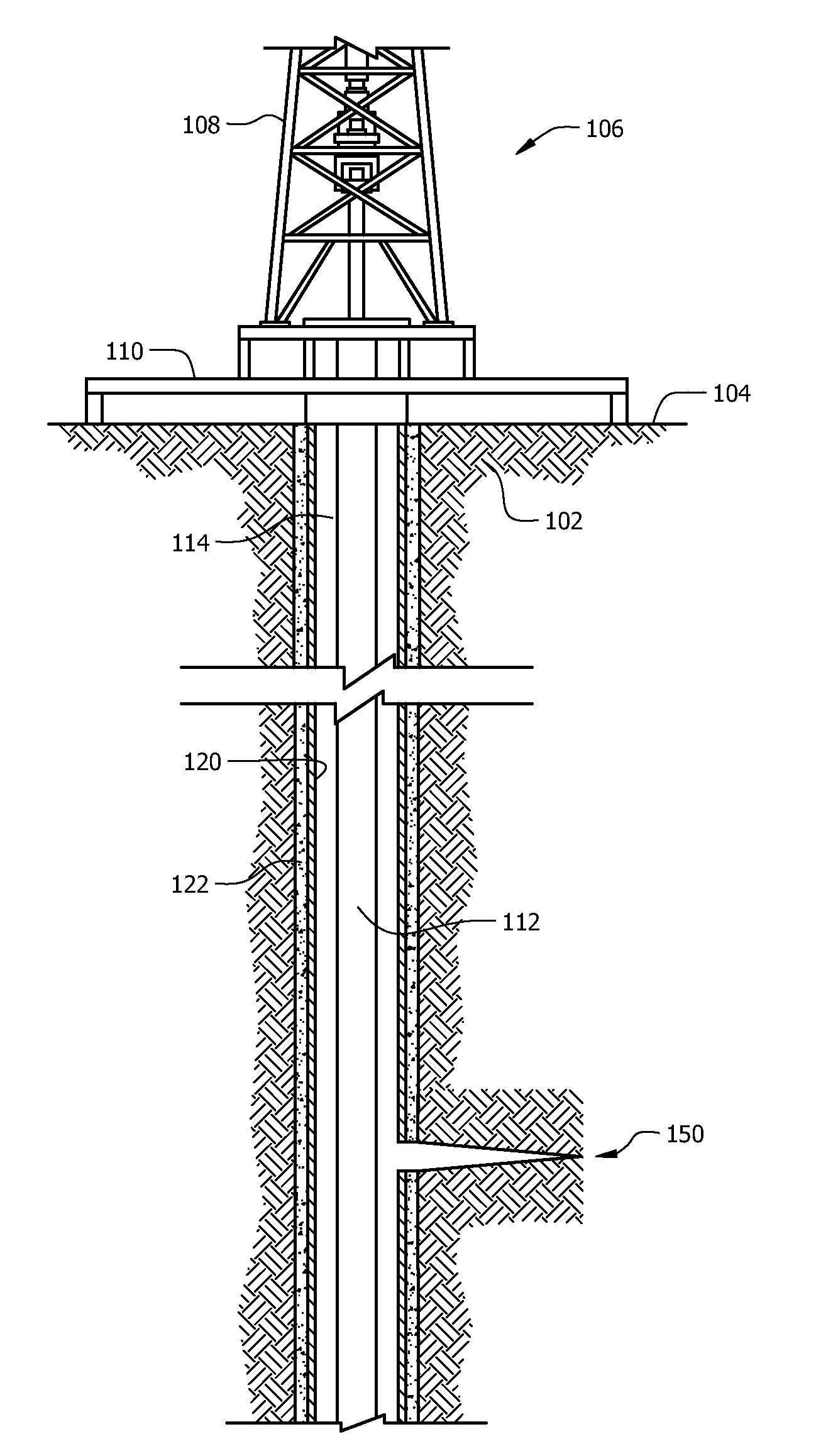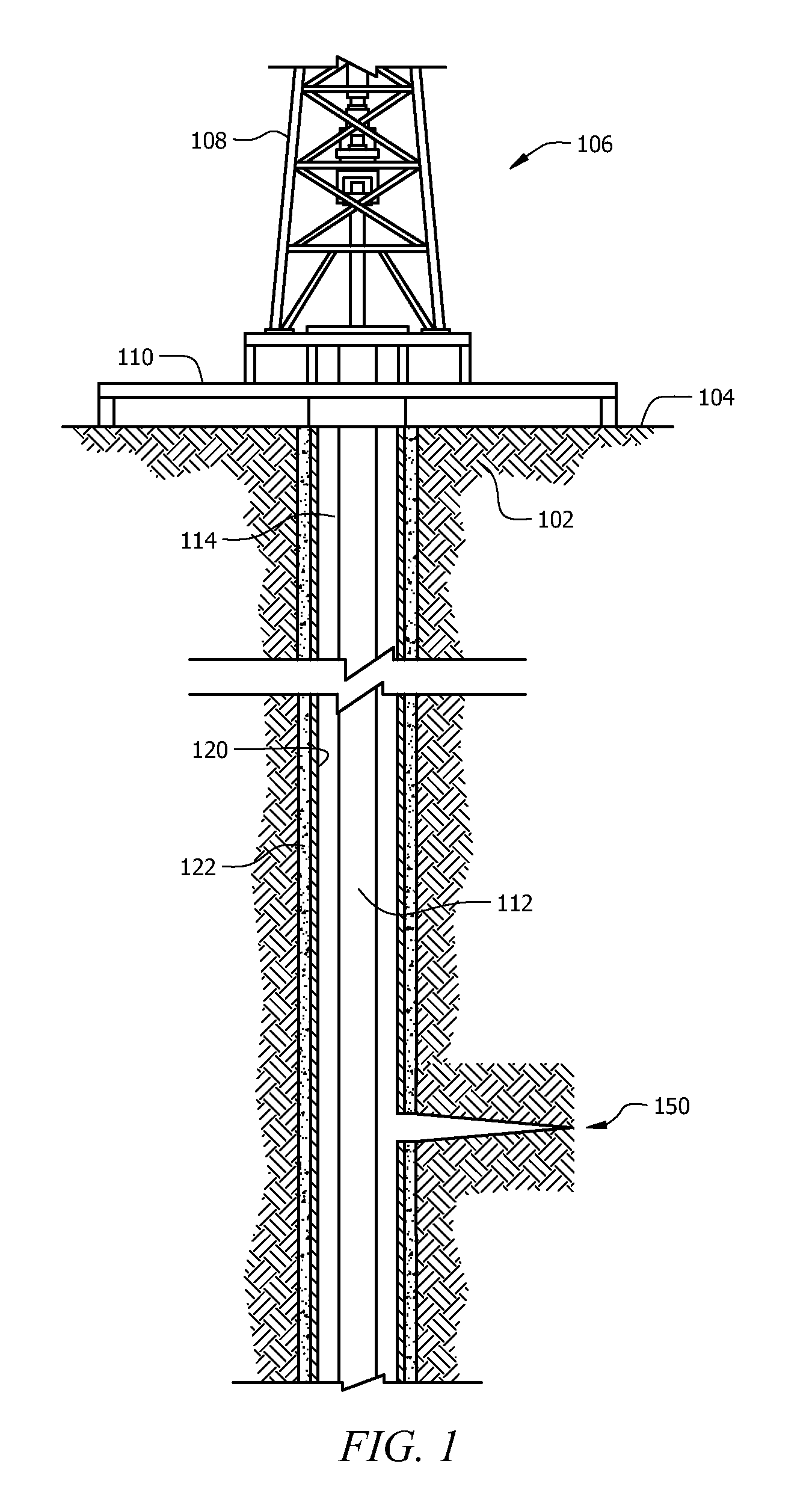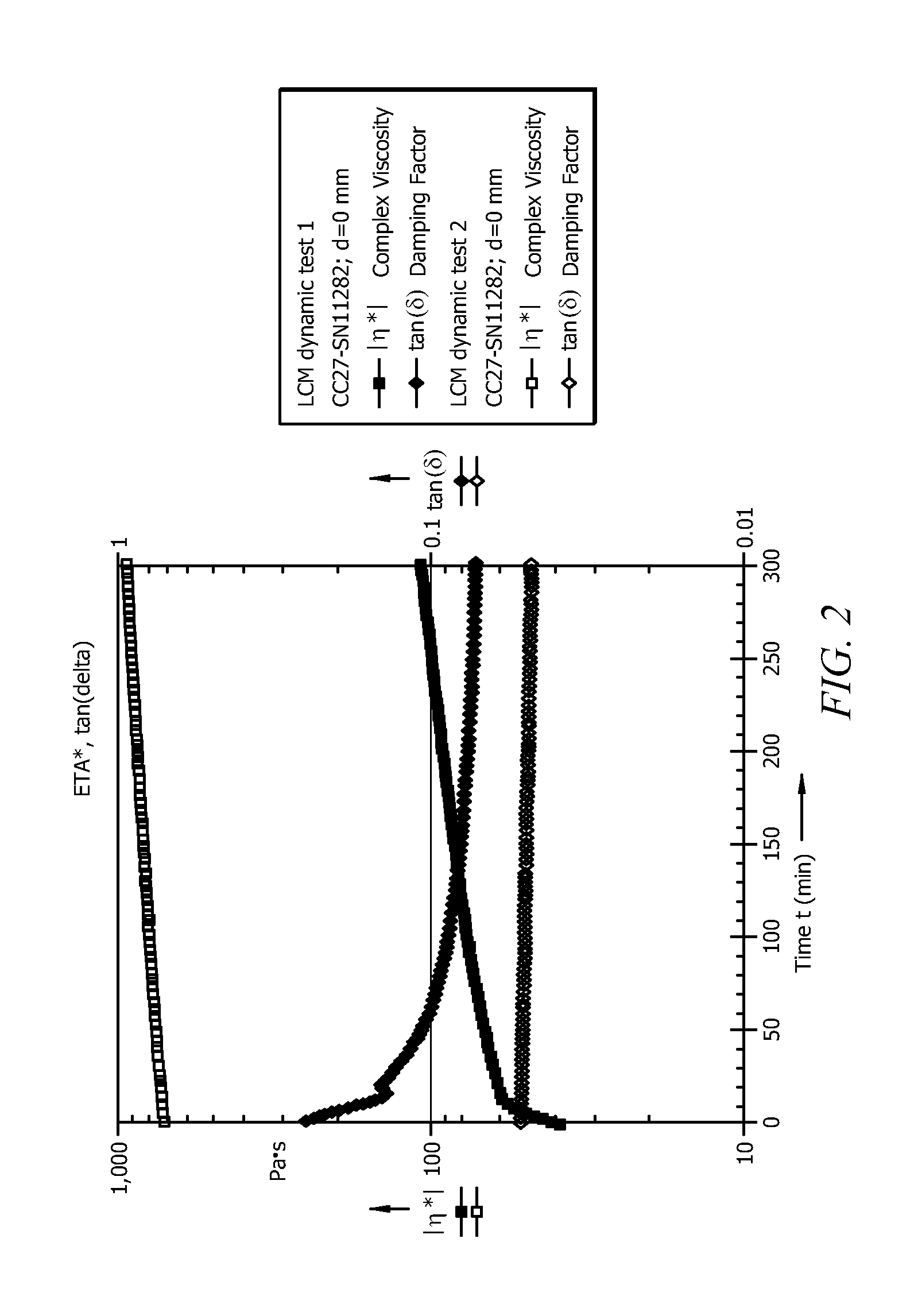Compositions and systems for combatting lost circulation and methods of using the same
- Summary
- Abstract
- Description
- Claims
- Application Information
AI Technical Summary
Benefits of technology
Problems solved by technology
Method used
Image
Examples
example 1
[0097]A YC was prepared by contacting a magnesium acrylate present in an amount of about 10% by weight of the final solution, triethanolamine, and a redox polymerization initiator and allowed to gel at room temperature. The amount of each component and the gel time for each sample are presented in Table 1.
TABLE 1SampleAcrylateTriethanolamineRedoxGel time at roomNo.(cc)1Water (cc)(85%) in ccinitiator (g)2temperature110300.670.8Immediate210300.340.82 min.31030None0.8No gel in 18 hrs.42.5200.20.25 min. - weakgel55150.370.240 sec.65150.370.6No gel at room(encapsulated)3temperature in 1 hr.Gelled at 165° F.in 2 min.75150.370.4Immediate(2.7% KCI)85150.180.42 min.(2.7% KCI)93.510.50.250.3 (NaBO3)46 hrs.103.510.50.250.3 (Na2CO3)18 hrs.112.57.5None0.2Less than 15 min.at 65° F.122.57.5Polyethyleneimine40.22 min.(0.2 cc)132.57.50.2 cc + 0.4 cc of 1%0.24 min.K3[Fe(CN)6]1The Acylate (40% aqueous solution) utilized here was AC-400 from De Neef Corporation.2The redox polymerization initiator utili...
example 2
[0099]A YC was formed using a water-soluble azo initiator to form a single fluid based pill. Samples 14 to 18 have the indicated compositions.
TABLE 2Sample No.Acrylate (cc)1Water (cc)Azo Initiator (mg)Gel time at F.1451520 (Perm C)15 min @ 150 F.15515 (4% KCl)20 (Perm C)15 min @ 150 F.16515 (12% KCl + 5% MgCl2•6H2O)20 (Perm C)15 min @ 150 F.17515% (1% sodium acetate)20 (Perm C)15 min @ 150 F.18515% (1% sodium citrate)20 (Perm C)15 min @ 150 F.1AC-400 (40% solution in water) from De Neef Corporation2Small amounts of free water form in 24 hrs in all cases.
[0100]PERM C is a low temperature initiator with a high temperature limit of about 140° F. to 150° F. Other high temperature water-soluble initiators, for example azo initiators such as PERM D are also available for higher temperature applications. The results in Table 2 demonstrate that salt solutions containing monovalent or divalent cations may be employed in the LCCCs of this disclosure without interfering with the gelation react...
example 3
[0102]A 10 ppg XC was prepared using a base formulation comprising 3.0 wt. % VIS I, 2 wt. % VIS II. 2 X-LINK I, and 40 ppb DUO SQUEEZE H. DUO-SQUEEZE H is a high fluid loss circulation treatment, X-LINK I is a synthetic polymer, VIS I is a synthetic macromolecule; and VIS II is a synthetic copolymer; all of which are commercially available from Halliburton Energy Services, Inc. The initial rheological profile of the XC was determined. At room temperature, the rheological properties of the fluid were measured using a FANN 35 viscometer at 3, 6, 10, 100, 200, 300, and 600 RPM. The results are shown in Table 4 and FIG. 2.
TABLE 4FANN 35150 F.6002003001202009010057 626 32410 s28
[0103]The results demonstrate the thixotropic viscosifier (Therma-vis) allows for the unique ability of the fluid to develop rapid gels at low or zero shear. This behavior helps hold the fluid in place while the secondary viscosifier (HZ-10) and cross-linker (HZ-20) thermally-activate to form a ringing gel and eff...
PUM
 Login to View More
Login to View More Abstract
Description
Claims
Application Information
 Login to View More
Login to View More - R&D
- Intellectual Property
- Life Sciences
- Materials
- Tech Scout
- Unparalleled Data Quality
- Higher Quality Content
- 60% Fewer Hallucinations
Browse by: Latest US Patents, China's latest patents, Technical Efficacy Thesaurus, Application Domain, Technology Topic, Popular Technical Reports.
© 2025 PatSnap. All rights reserved.Legal|Privacy policy|Modern Slavery Act Transparency Statement|Sitemap|About US| Contact US: help@patsnap.com



